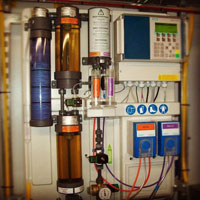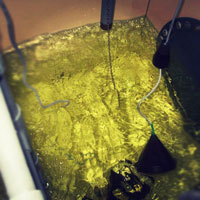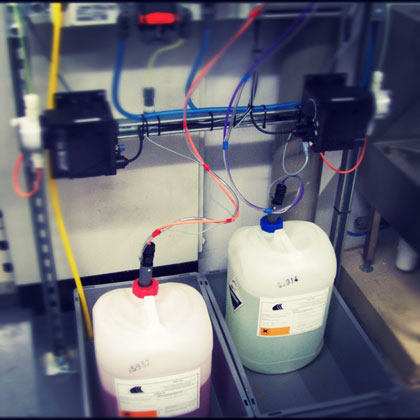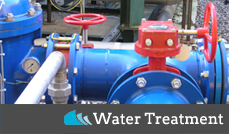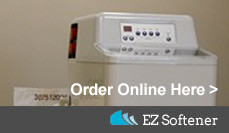Chlorine Dioxide Generators
Systems for water supplies as a safeguard against
infection by bacteria.
Due to the nature of hospital buildings, tanks and pipework may have been installed for many years, with multiple changes of use. This may have led to low use areas or over-capacity storage, which over time may lead to the accumulation of biofilm on internal pipework. While chlorine neutralises as it passes through the system, it is not capable of breaking through biofilm, which can har-bour microorganisms such as Legionella and Pseudomonas.
Chlorine dioxide is capable of destroying this biofilm, as well as any microorganisms be-neath. Provided the residual level is below 0.5mg/l, biofilm will also be removed slowly, avoiding blockage of downstream outlets.
Advantages
Chlorine dioxide has been shown to be more effec-tive than chlorine in the control of legionella bacte-ria and pseudomonas species, as the chlorine diox-ide molecule bonds with the amino acids in the sys-tem, destroying them and therefore eliminating the building blocks that micro-organisms require to sur-vive. Due to the way it works, chlorine dioxide will never lose its efficacy, making it an ideal residual biocide. Chlorine dioxide is also far less corrosive than chlorine, meaning that systems last longer.
Chlorine dioxide is also not negatively impacted by pH, allowing optimal yield regardless of the incom-ing supply.
- Less corrosive than chlorine
- Superior for control of legionella bacteria
- Not negatively impacted by pH
- Does not lose efficacy
- More effective than ozone and UV
Performance
One of the issues previously encountered with chlorine dioxide was the generation of a biocide with a strong yield. It is important that the donor chemicals used are mixed in a suitable proportion to generate a high yield, which will increase the efficacy of the product. For this purpose, a preci-sion PLC-controlled unit is used, which allows op-timal chlorine dioxide yield through activation of prismatic pumps, the flow rate constantly moni-tored by flow totalisers.
The donor chemicals are pumped using prismatic pumps from commercial carbuoys into a pressure-less reaction tank. Once the defined reaction time has completed, the solution is flushed through with water into the preparation tank, which feeds the storage tank linked to the system dosing pumps. This allows a constant source of stable, optimum yield solution ready to be pumped as re-quired.
Safety
While performance is of paramount importance, so is safety. Each generator has built in fail-safes which will shut down the system and pro-duce an alarm, at the generator and at a BMS system if linked. The system is designed to shut down in the event that chemical dosing becomes imbalanced, a chemical supply is low, or there is loss of water supply. The pumps are usually linked to the system using a pulse meter, mean-ing that the product is only added when re-quired, and is designed to eliminate the risk of accidental overdose. All gases are vented via a chamber containing sodium thiosulphate neutral-iser, reducing the risk of any accidental gas re-lease.
Please note that ClO2 and it’s breakdown prod-ucts (chlorite and chlorate) can be deterious to neonates and renal dialysis patients. It is recom-mended under HTM 401 part B that these areas receive a supply with no chemical additives.
| Chlorine Dioxide Download |
